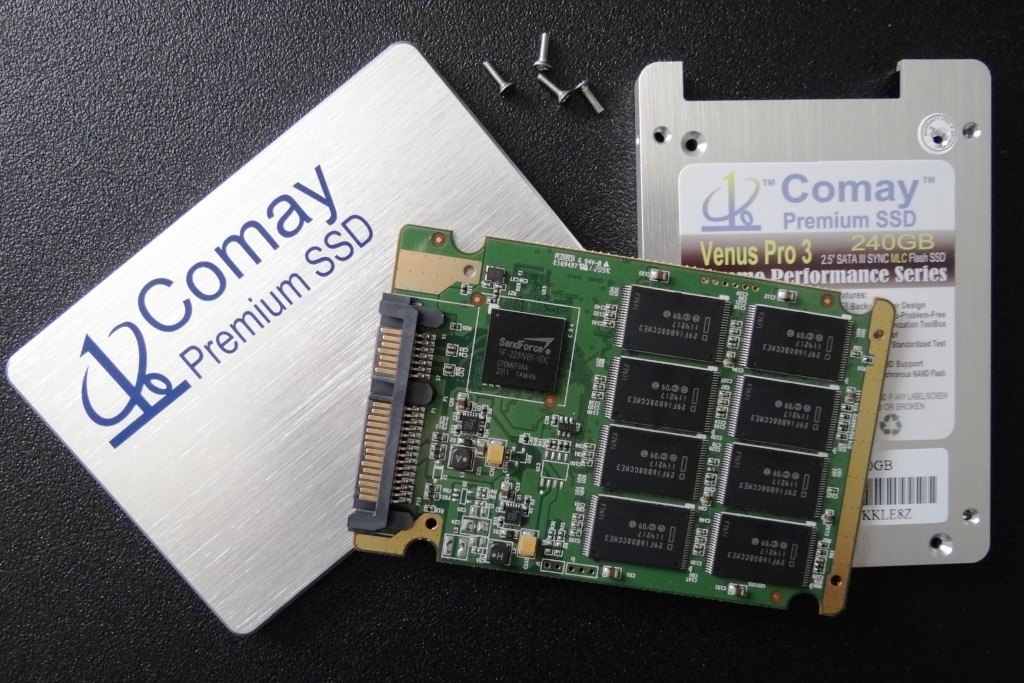REPORT ANALYSIS AND FINAL THOUGHTS
I guess the most accurate point we could make with respect to the Comay Venus Pro 3 240GB is that it is, without a doubt, the top SSD not available to the consumer today, not as of yet anyway. It is too bad really because it is an absolutely wonderful SSD with characteristics that we most likely won’t be seeing in the consumer market anytime soon, yet, these just may be qualities that the consumer would take comfort in.
I know that having an SSD available to me with both In-Drive UPS and overload protection virtually guarantees that this doesn’t get tucked in with the ever rising pile of SSDs that have come across our Bench. Add to that the fact that this ‘SandForce Driven’ SSD has been able to achieve performance equal to that of the Intel 520 and places itself in our ‘Top 3’ of Vantage Total Point testing and this just may be a ‘must have’…if we can find a way to get them on the market.
Equal to its performance is the Venus Pro 3’s ability to be consistent throughout all of our benchmarks, unlike most that seem to trail in one bench or another. When we look at the well rounded performance, along with the enterprise extras that are included, this may be the most complete SSD we have tested to date which should be a huge hint to CoreRise.
To further validate our report, we thought we might explore the difference in performance of this new Venus Pro 3 which, for all intensive purposes, appears to have a very similar physical make-up as our last Comay Venus 3 review minus the Super-capacitor. First and foremost, the firmware of this SSD was 2.52 with the former being 1.32 according to CDI and we have upgraded our version of RST from 10.6 to 11.1 with the introduction of our new Test Bench. In order to validate our findings, however, we ran Vantage on three different system, this being that identified along with our former X78 and, last but not least, the original for which the original Comay review was conducted. All three provided very similar results.
FINAL THOUGHTS
Last but not least, rest assured that this report will be reaching the eyes of CoreRise executives within hours of it’s publishing and I would hope they might suggest an avenue where Comay SSDs might be more available in the North American marketplace. I will reach out to the Canadian Distributor at Synetic.Ca as well and, if we can get availability and a price to match, we will tack on a definite Editor’s Choice to complete this report!
Stay tuned!
 The SSD Review The Worlds Dedicated SSD Education and Review Resource |
The SSD Review The Worlds Dedicated SSD Education and Review Resource | 


tbh i was hoping this new pro version SSD would do extremely well, was really looking foward to a sandforce drive out perform the plextor m3pro. currently sandforce drives been doing pretty well with the incompressible data at over 300mb/s but thats just crystaldisk though, which shows the best possible results unlike AS SSD which shows the worst possible result.
quite frankly the lowest results showing in AS SSD for plextorm3p are way too good, and its access time simply amazing lol. sandforced write latency usually around .18-.2 ms, just cant beat marvel/samsung controller.
i’ll probably just wait till something* that has really good 4k speed, something a bit better than the intel 520 drives
you can buy this product with contact iPCZEN.
http://www.ipczeninformatique.fr
I’ve always wondered just how much a supercap adds to the price of an SSD. I suspect very little. These should have been standard on all models, not just the enterprise ones. Just a marketing gimmick to boost prices.
As for access time performance you have to be cautious here. A controller designer can use DRAM as a crutch to boost performance and there is always a tradeoff. In this case it’s an incrfeased risk of data corruption or loss. The large DRAM cache becomes a data integrity risk as well as performance enhancer. Hell, if you used enough DRAM you could achieve RAMDISK performance across the board.
The supercap adds a few $s to the BOM, depending on the size of the cache, and whether the device/controller operates in cache protection mode (which keeps some flash memory erased and ready to accept the contents of the cache).
As for their use of DRAM cache to speed up performance, that’s why CoreRise has used the supercap: You get all the write speed benefits of a large DRAM cache, with no loss of data integrity. The supercap acts as an internal UPS to ensure that there’s time to write all the cache contents to flash after a power loss/interruption.